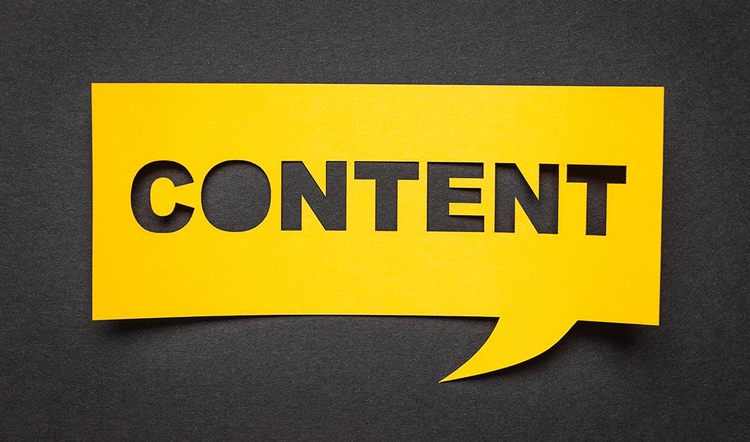In Praise Of Invisible Content
Where the content is working well, we don’t even notice it—this has transpired from consumers’ responses to Adobe’s “State of Content: Rules of Engagement” report.

Funny and beautiful content matters most, according to Adobe’s new “State of Content: Rules of Engagement” report. But are we missing something here, asks Dan Brotzel.
What did I do online yesterday, you ask? Well, many things, actually.
I bought two tickets for a Neil Young concert for my wife’s birthday. I bought a couple of second-hand books by Colm Toibin via Amazon Marketplace. I checked the latest world news and football gossip on the BBC site a few times, then checked it all again on the Guardian site.
I browsed some marketing blogs, some that I check regularly and others that attracted me because of a promising-looking headline in an email newsletter. I googled a client’s name to make sure I was spelling it right, and checked the address of a training course I’m attending next week. I signed up for a course in keeping chickens (don’t ask).
I’d love to say I spent a lot of time on Facebook, where I was deeply engaged by the memetastic content of various brands, but I didn’t really. Most of my online activity was more task-focused in nature. I researched purchases, sought answers to specific questions, completed transactions, and sifted through offers of content (headlines) from familiar providers I’ve already come to trust and occasionally even enjoy. A lot of the time, I was just googling stuff.
In all of these activities—and hopefully my online life isn’t that different to yours (apart from the chickens, perhaps)—content played a vital part, both as support and destination, signpost and substance. But in a lot of these cases, where the content is working well, we don’t even notice it; it’s only when we have a bad experience that the content even impinges on our awareness.
So, perhaps, it’s no surprise that this kind of invisible content doesn’t seem to get referenced much by the respondents in Adobe’s new “State of Content: Rules of Engagement” report.
It’s certainly in there among the sources of content people were quizzed about, which include everything, from social sites and blogs, to search engines and government sites, to email newsletters and e-commerce content. But when people were asked about the kind of content they prefer, they spoke not of seamless usability or intuitive information design, but of humour and beauty: content designed to draw attention to itself.
According to the report, 59% of consumers would rather engage with content that’s beautifully designed than content that’s simple. But are beauty and simplicity really opposites? Online, I would argue, they’re often the same thing, as Steve Jobs well knew and the Information is Beautiful movement regularly demonstrates. And it takes a great deal of skill and effort to create a content experience so (beautifully) seamless that we don’t even know it’s there.
We also read that 70% of consumers globally like the idea of humorous content from companies, but only 14% rated company content as entertaining. Well, taken as a whole, I wonder how highly humour really figures as a criterion of customer satisfaction with company content. Do we really prioritise entertainment value when it comes to a first-time buyer’s mortgage guide, say? Or a video on how to change the gas bottle on your barbecue? Or a white paper on the value of migrating our CRM to the cloud?
Humour has its place, of course, and it’s obviously a key driver for sharing content socially. But alongside the fact that the ROI of social sharing is notoriously difficult to establish, humour is also notoriously subjective, fiendishly hard to pull off (there’s something inherently unfunny about someone trying too hard to make you laugh), and even harder to localise. If more brands and businesses don’t adopt humour as a tactic, perhaps it’s because in their case it doesn’t stand up to a rigorous marketing cost-benefit analysis.
Other aspects of the survey show a greater awareness of the value of invisible content. Almost nine in 10 users say they would switch devices or stop viewing altogether when encountering content that fails to meet their expectations, for instance. I bet those expectations are more about usability rather than beauty or funniness quotient.
And two-thirds of respondents say they would stop engaging altogether if the content is too long. As ever, online users want content that gets to the point, content that tells them what they need to know, content that looks easy to skim, and scan, and navigate. We all eschew content that feels long. But quality content is fit for purpose—and that means it’s as long as it needs to be. We can all think of plenty of moments online when insufficiently long content would be a disappointment. The recent renaissance in long-form content, with the attendant SEO benefits, is testament to this. Concluding that your content should never be “long” is a bit like saying your artwork should never use the colour blue. It all depends on the context.
“Content” has become a notoriously baggy concept these days, which can cover everything from a tweet, to an instructional video, to a search results page, to a streamed movie, to a WhatsApp message, to an insurance quote form. It could even, some argue, include the substance of a call with a customer-service agent, or the verbal advice dispensed by an Apple employee over the Genius Bar.
So, perhaps, in seeking to elicit meaningful insights into content performance and quality—and to avoid comparing lemons and bananas—we need a richer, more granular vocabulary that can break content down into different types, functions, and formats. A vocabulary that brings the benefits of the invisible into clearer view at last.